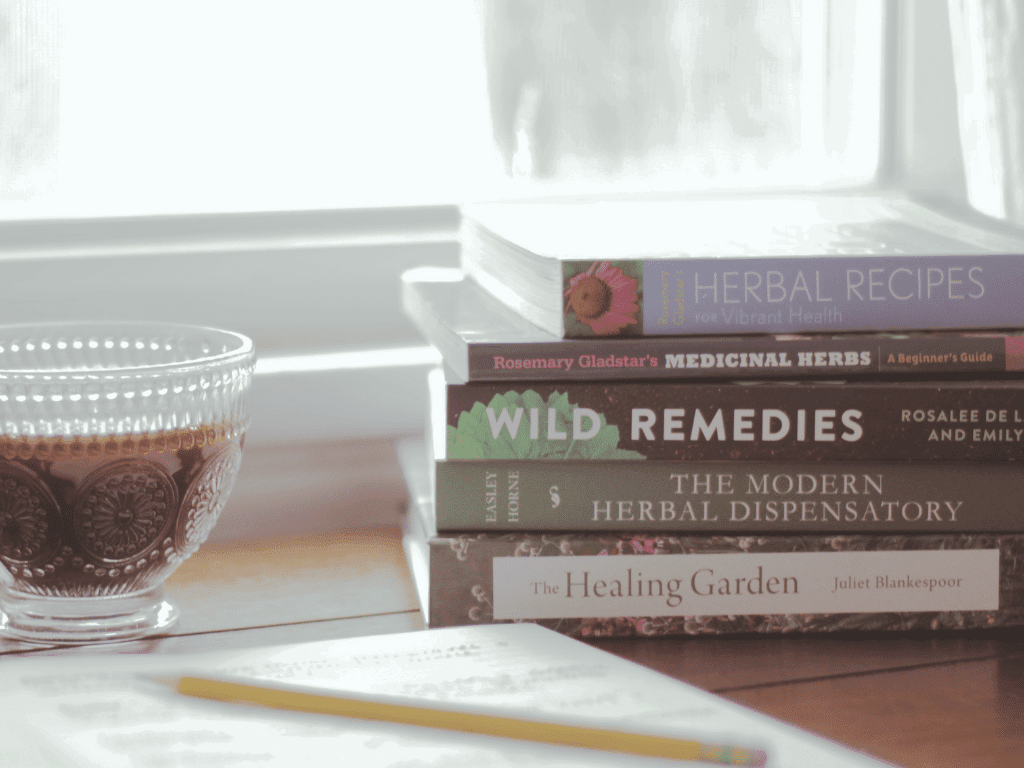When I first started gardening, I was disappointed with how much time it took for plants like lavender, rosemary, elecampane, and echinacea to grow. I wasn’t able to get a good harvest of these herbs until 3 years later!
I expected immediate results for all my hardwork, but unlike growing vegetables, growing medicinal herbs requires a lot of patience. However, all that time allowed me to really learn about each plant and connect with them – which was good for my soul.
While I waited for my slow-growing herbs, I decided to focus on a few fast-growing plants to help keep my impatience at bay. Some of these include calendula, spilanthes, holy basil, chamomile, and lemon balm.
These herbs are not only easy to grow but also have higher yields, meaning I was able to harvest enough to fill my apothecary after one growing season.
Calendula
Calendula officinalis
Energetics: Warming, Drying, Stimulating, Constricting
Actions: Anti-inflammatory, Antimicrobial, Astringent, Lymphogogue, Vulnerary, Mild Estrogenic
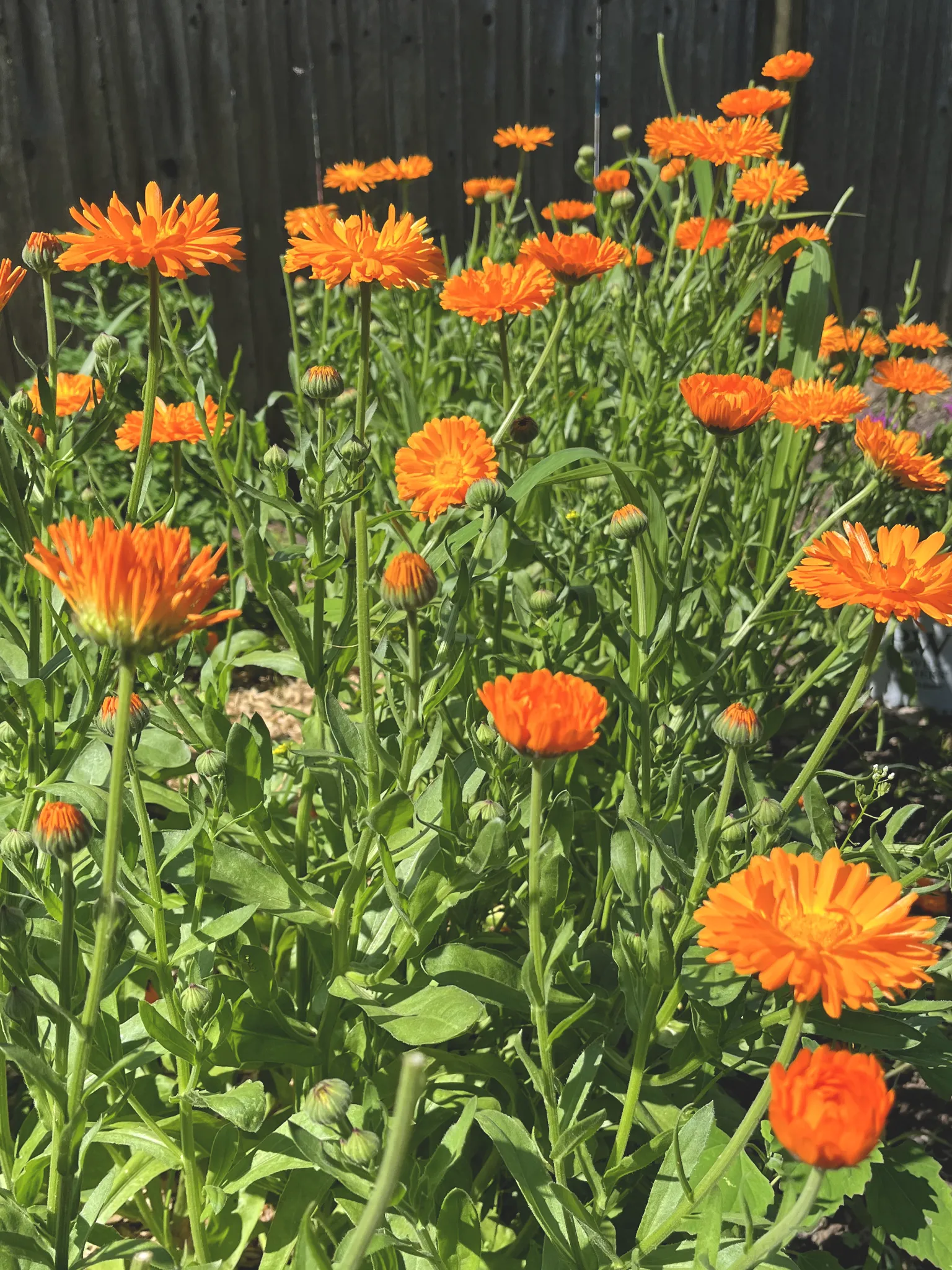
Calendula (Calendula officinalis), also known as pot marigold, is a happy addition to any garden. The photo above was taken the first year I grew calendula in my garden. As you can see, they produce a lot! I planted 12 in total and about 4 or 5 of them are pictured here.
Calendula flowers have been used for centuries to treat a wide range of ailments, from skin irritations to digestive issues. It is often used to promote blood flow to the skin, which can help to improve healing in minor wounds, bruises, and other skin irritations.
Calendula also has a stimulating effect on the lymphatic system, which can help improve circulation and immune function.
The flowers are great for healing salves and ointments due to their ability to stimulate tissue regeneration and promote healing. Sometimes I add the fresh petals to salads as a pretty garnish, but I mostly use the flowers dried. Once dried, I store them in a mason jar and add them to soups, oils, salves, and teas.
Make floral body oil with calendula flowers.
Growing Calendula
To grow calendula, sow seeds directly into the garden after the last frost has passed. They germinate within a week as long as the temperatures are warm enough. They will begin to flower after about six weeks, and will continue to bloom all summer long.
I live in a cold region, so I start my seeds indoors about 6 weeks before the last frost – around the first week of April.
Calendula prefers full sun and well-drained soil, and once established, requires very little maintenance. I give them liquid fertilizer about once a month starting with fish emulsion then switching to Tiger Bloom once flower buds appear.
Join Our Newsletter
Sign up for our monthly newsletter to get easy gardening tips, seasonal to-dos, and herbal recipes delivered right to your inbox.
Thank you!
Check your email to confirm your subscription.
Harvesting Calendula
Harvest the flowers in the early afternoon or late morning after all dew has evaporated. Choose flowers that are fully open and deadhead any that are wilting. Be sure to harvest the entire flower, including the green sticky bract. The bracts contain resin that is highly medicinal with wound-healing properties.
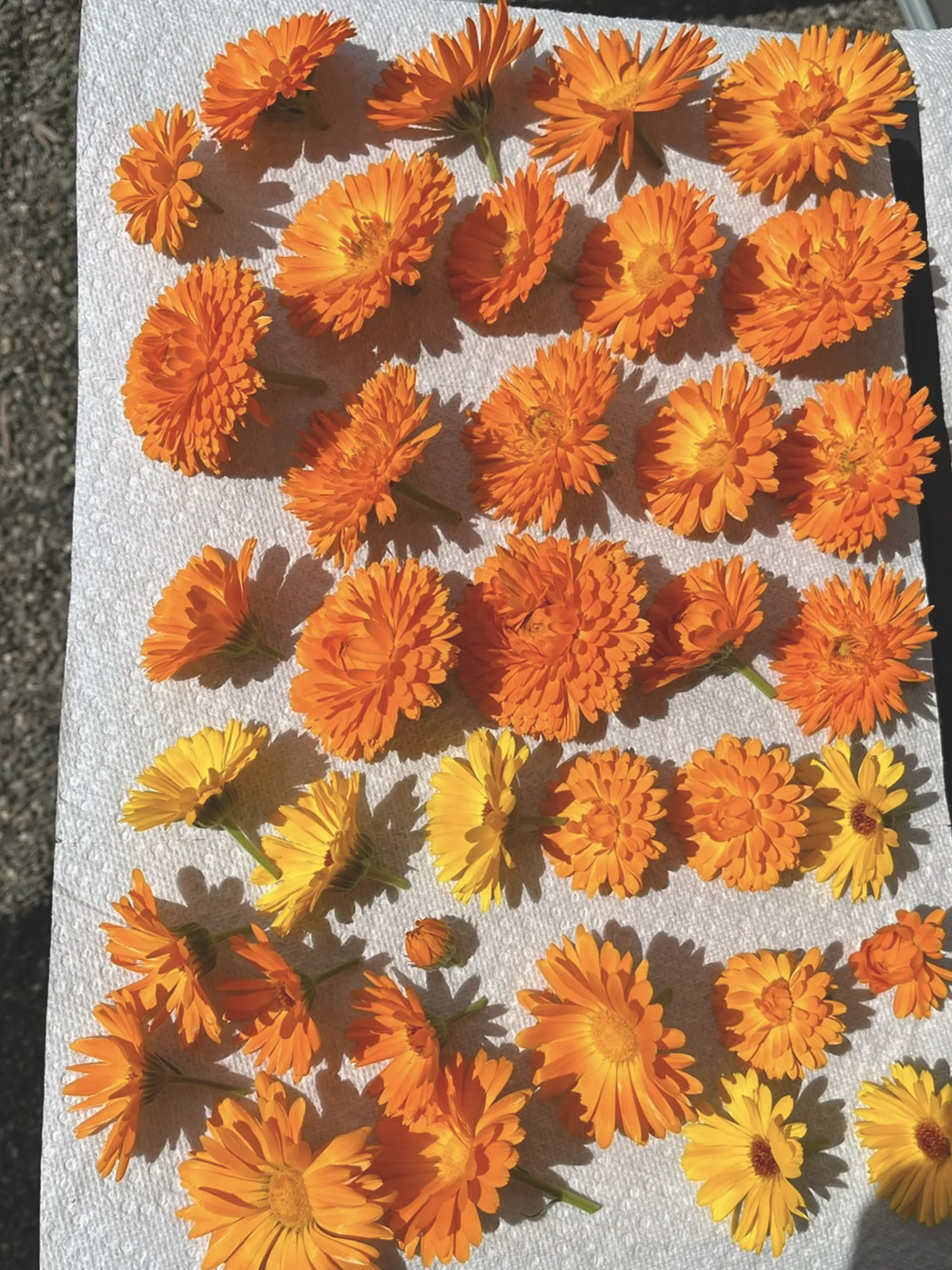
I harvest about one-third of the flowers every other day, and leave the rest to the bees and butterflies. I let the flowers sit outside for a bit so the bugs have a chance to escape. Then, I dry them out with a dehydrator on the lowest setting – 95 degrees F.
I stop dead heading 1 or 2 plants in the late summer so I can collect the seeds. Each flower head can produce up to 20 seeds. Let the seeds fully dry out then store them in cool, dry place.
Calendula attracts a lot of beneficial insects to the garden and are excellent companion plants to cucumbers, tomatoes, carrots, and leafy greens.
The Best Tomato Companion Plants
Spilanthes
Acmella oleracea
Energetics: Mildly Warming, Mildly Drying, Stimulating, Dispersing
Actions: Analgesic/Anodyne, Antimicrobial, Astringent, Diuretic, Immune Stimulant, Sialagogue
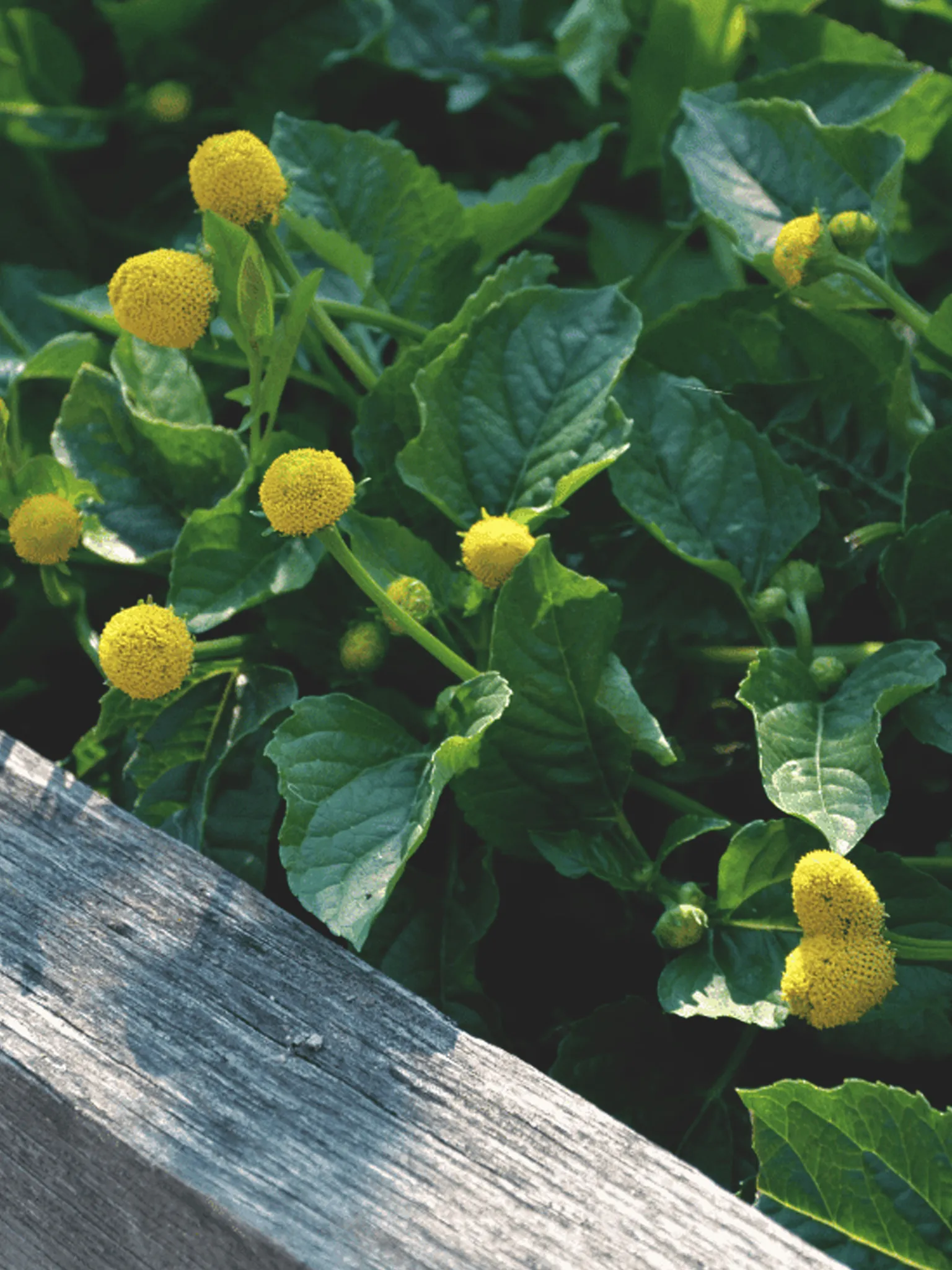
Spilanthes (Acmella oleracea), also known as the toothache plant, is a unique and unusual herb that creates a distinct tingling sensation when chewed. This herb has been used for centuries to alleviate toothaches, but it also has many other medicinal properties.
Some varieties have a red center on top of the flower, but mine do not.
Spilanthes is often used for its analgesic and antimicrobial properties. It is also used as an immune booster due to its ability to stimulate white blood cell production, which can help the body fight infections.
My favorite way to use spilanthes is in immune-stimulating tinctures for cold and flu season. I mix it with echinacea tincture and use 3 times a day at the first sign of a cold.
Spilanthes has been traditionally used to support oral health. The herb has anesthetic properties that help numb the pain associated with toothaches and other dental issues. It is also used as an anti-inflammatory agent to reduce swelling and inflammation in the gums and other parts of the mouth.
The numbing effects of spilanthes can help alleviate sore throat, gum infections, and mouth ulcers. Its anti-inflammatory properties can be used topically to alleviate skin irritations, wounds, and insect bites. Some other uses include stimulating the digestive system and improving appetite.
When I have a really painful sore throat, I chew a small piece of the dried flower to help numb the pain. It works well and just a very small piece is needed because they are very potent.
I do not recommend chewing an entire flower because it could cause breathing problems!
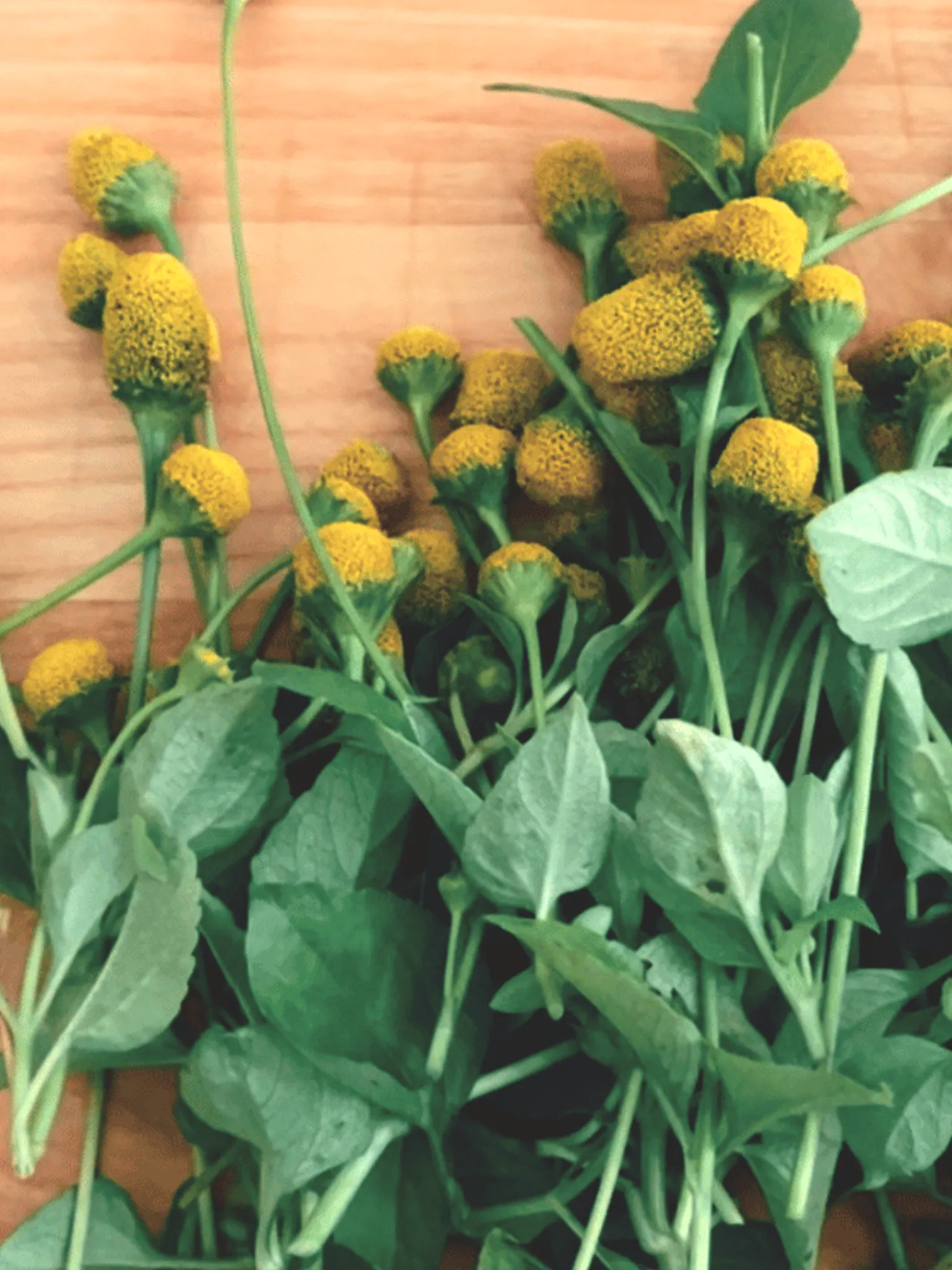
Growing Spilanthes
To grow spilanthes, sow seeds directly into the garden when the soil has warmed up, or start them indoors about 6 weeks before the last frost. These plants prefer full sun and well-drained soil and can tolerate drought conditions.
Spilanthes are perennials in warm climates, but annuals in colder areas. They germinate within a week as long as the temperatures are warm enough. They will begin to flower after about six to eight weeks, and will continue to bloom all summer long.
Harvesting Spilanthes
I harvest the flowers, leaves, and stems about three times during the growing season. Two plants provide more than enough to fill my apothecary.
In the late summer, I stop dead heading so I can collect the dried flowers for seed. Each flower head produces a ton of seeds. Let them dry out then store them in cool, dry place. They self-sow pretty easily, so lookout for bonus plants the following spring!
Holy Basil
Ocimum tenuiflorum
Energetics: Slightly Warming, Slightly Drying
Actions: Adaptogen, Anti-inflammatory, Antimicrobial, Carminative, Diuretic, Expectorant, Galactagogue, Immuno-modulator, Antidepressant
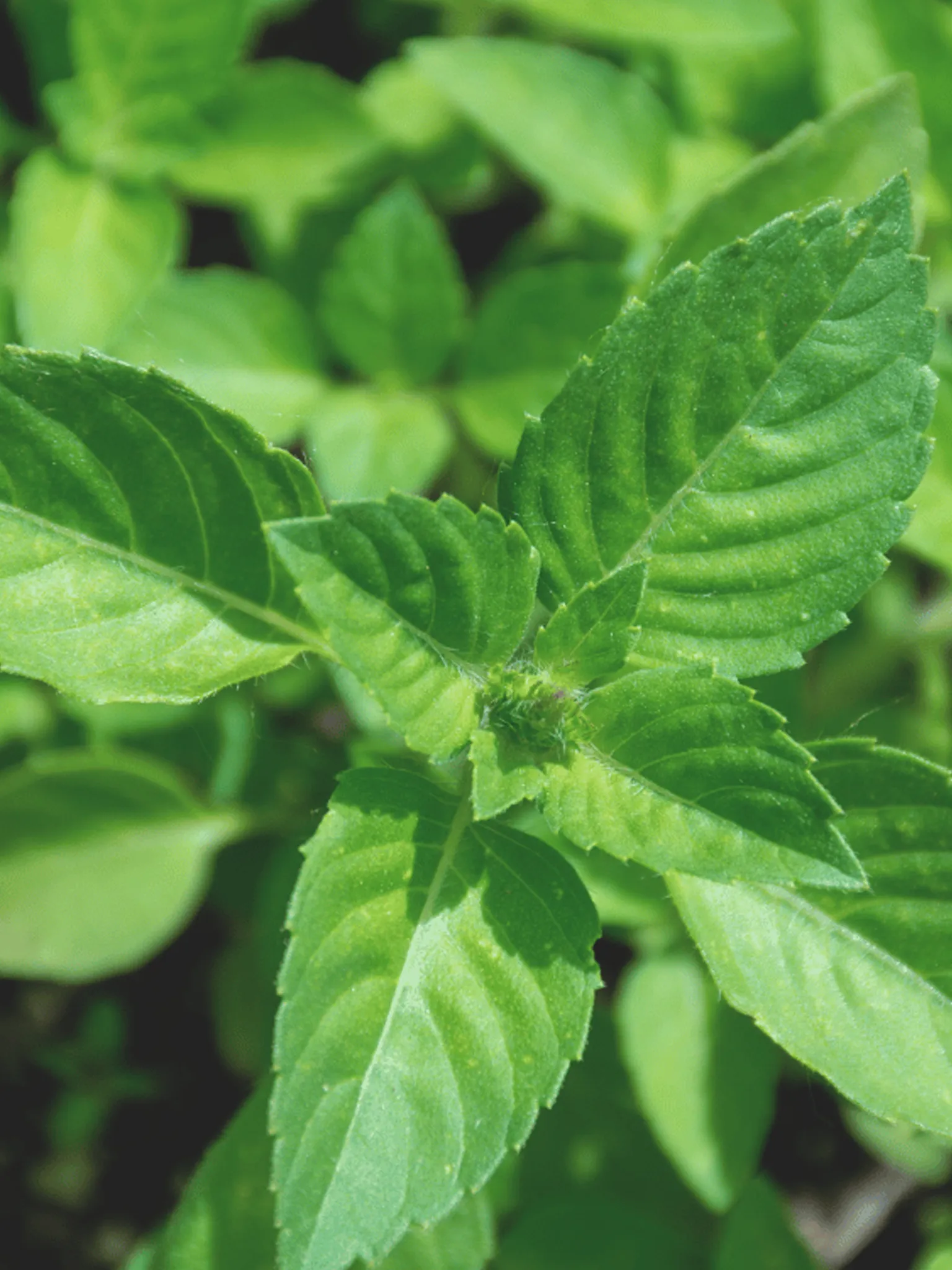
Holy basil (Ocimum tenuiflorum), also known as tulsi, is a sacred herb in Ayurvedic medicine and is used to promote longevity and well-being. Holy basil has a unique flavor and aroma that is both spicy and sweet. It is also a powerful adaptogen, which means it can help the body to adapt to stress and reduce inflammation.
Holy basil also has immunomodulatory and cognitive-enhancing effects. It contains several bioactive compounds, including eugenol, ursolic acid, rosmarinic acid, and oleanolic acid, which have been shown to help regulate the immune system and enhance its function.
Holy basil contains compounds that can increase blood flow to the brain, enhance the production of neurotransmitters like dopamine and serotonin, and improve the function of the brain cells. The herb also helps reduce stress and anxiety, which are known to impair cognitive function.
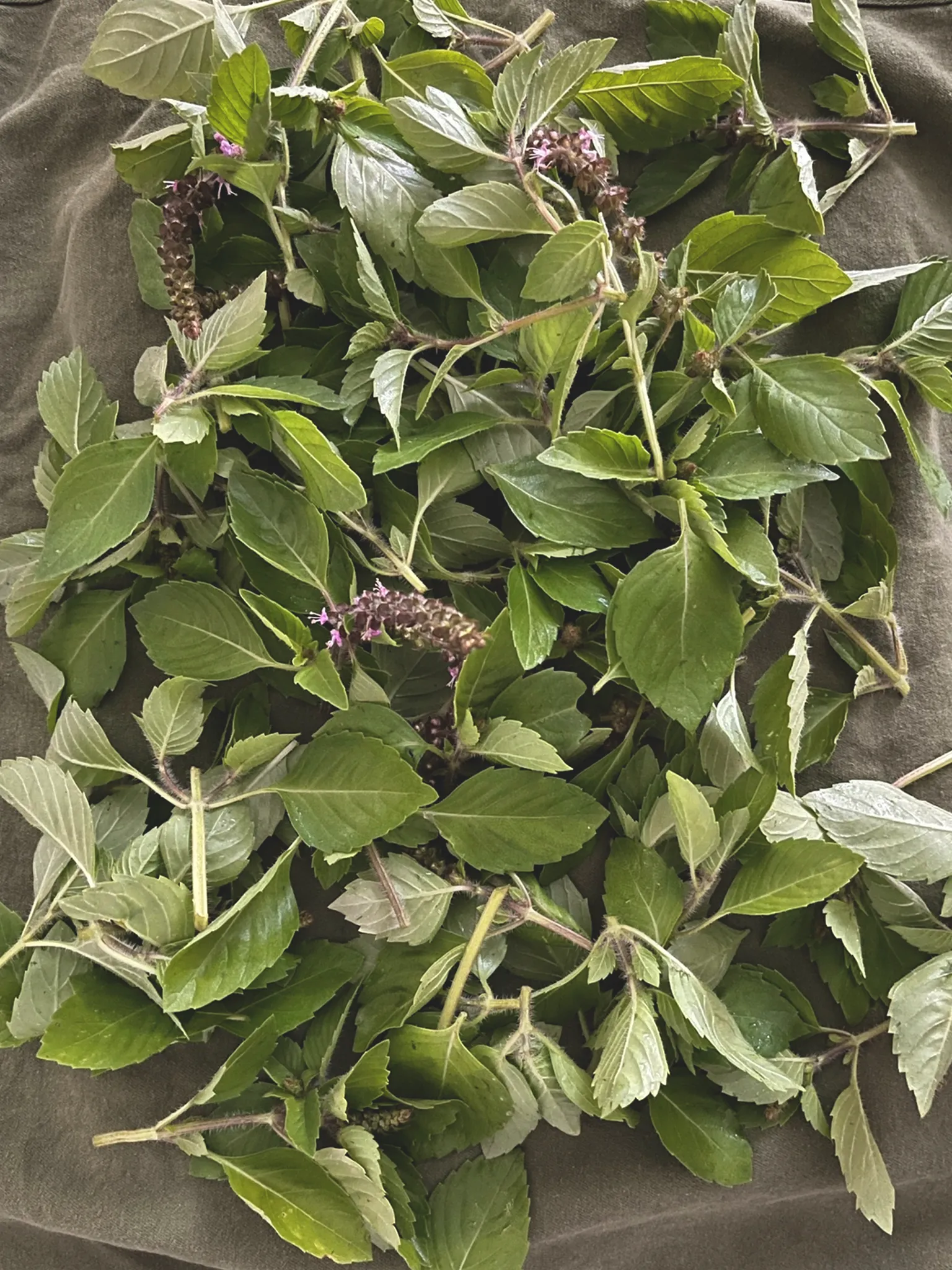
Growing Holy Basil
To grow holy basil, sow seeds directly into the garden when the soil starts to warm up or start indoors 6 weeks before your last frost. It prefers full sun, well-drained soil, and requires regular watering.
Holy basil is a perennial herb in warmer climates and an annual in colder areas. I have not been able to keep holy basil alive through the winter, so I sow new plants every spring.
Harvesting Holy Basil
I harvest about 2/3 of the plant (stems, leaves, and flowers), at a time. Leaving 1/3 of the plant behind will allow it to continue to grow and thrive. I do this a few times per season and fertilize with fish emulsion after each harvest.
Harvest the stems, leaves, and flowers in the early afternoon or late morning after all dew has evaporated.
I stop removing the flower stalks in late summer so I can collect the dried flowers for seed. Each plant can produce hundreds of seeds.
Let the flowers dry out then store the seeds in a cool dry place. Some seeds will likely fall to the ground, giving you more holy basil plants next year.
Join Our Newsletter
Sign up for our monthly newsletter to get easy gardening tips, seasonal to-dos, and herbal recipes delivered right to your inbox.
Thank you!
Check your email to confirm your subscription.
Chamomile
Matricaria chamomilla / Matricaria recutita
Energetics: Slightly Cooling, Slightly Drying
Actions: Nervine, Antispasmodic, Anti-inflammatory, Antimicrobial, Carminative, Diaphoretic, Emmenagogue,
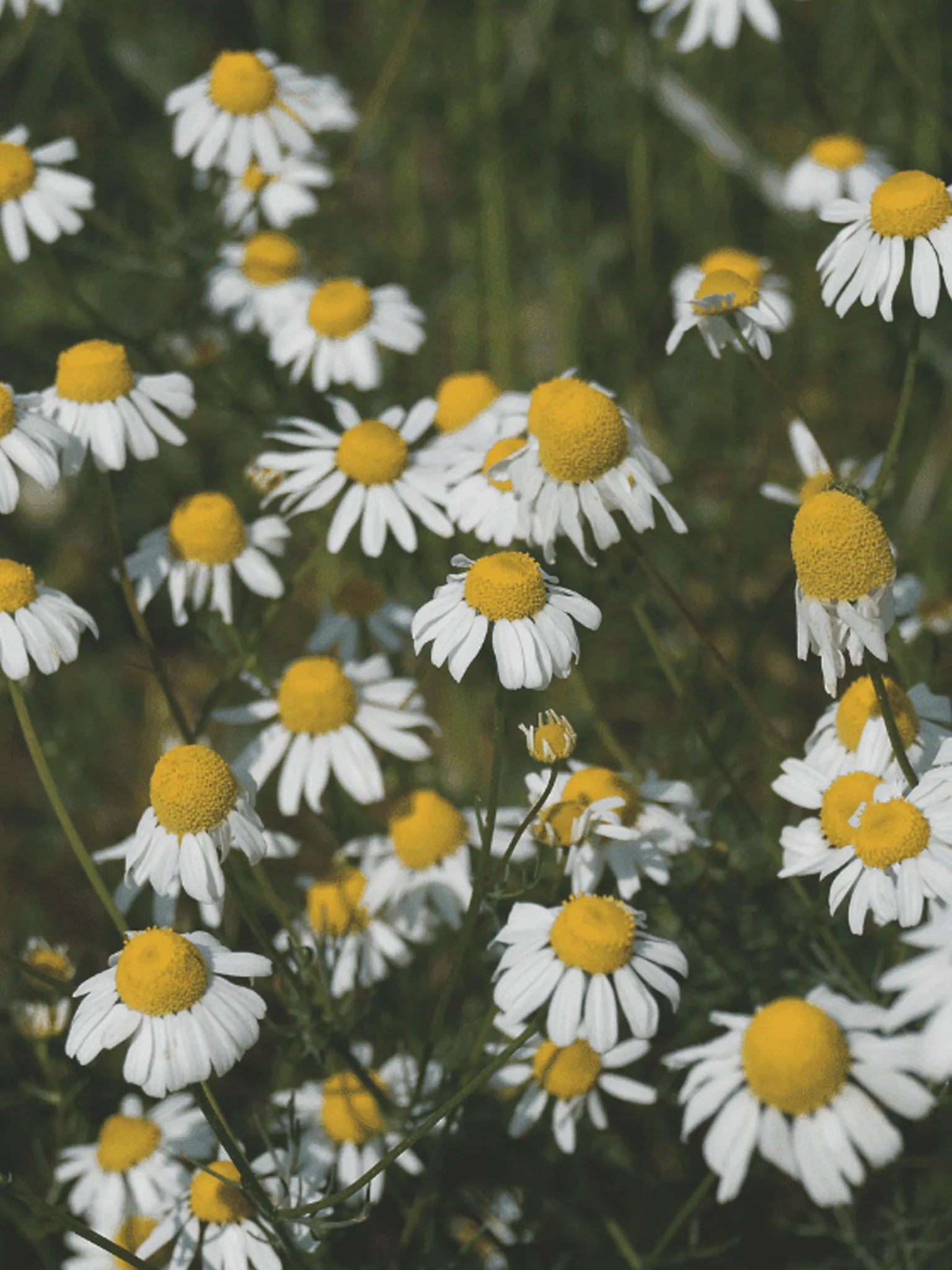
German Chamomile (Matricaria chamomilla) is a gentle and soothing herb that has been used for centuries to promote relaxation and sleep. The word “chamomile” comes from the Greek words “chamai” and “melon,” which mean “on the ground” and “apple,” respectively. This is because the plant has a sweet apple-like fragrance.
Chamomile contains compounds that have a calming effect on the nervous system and can help to reduce anxiety and stress. It is also a powerful anti-inflammatory herb that can help to reduce inflammation and promote healing.
German Chamomile is commonly used for digestive support due to its anti-inflammatory and antispasmodic properties. The herb can help relieve digestive issues such as gas, bloating, and abdominal cramps. It can also help with conditions such as irritable bowel syndrome (IBS) and colitis.
Chamomile is known to contain a variety of compounds that contribute to its digestive benefits, including chamazulene, alpha-bisabolol, and flavonoids. These compounds have been shown to help reduce inflammation in the digestive tract, which can alleviate symptoms associated with digestive issues. Additionally, chamomile can help stimulate the production of digestive juices, which can aid in the breakdown and absorption of nutrients.
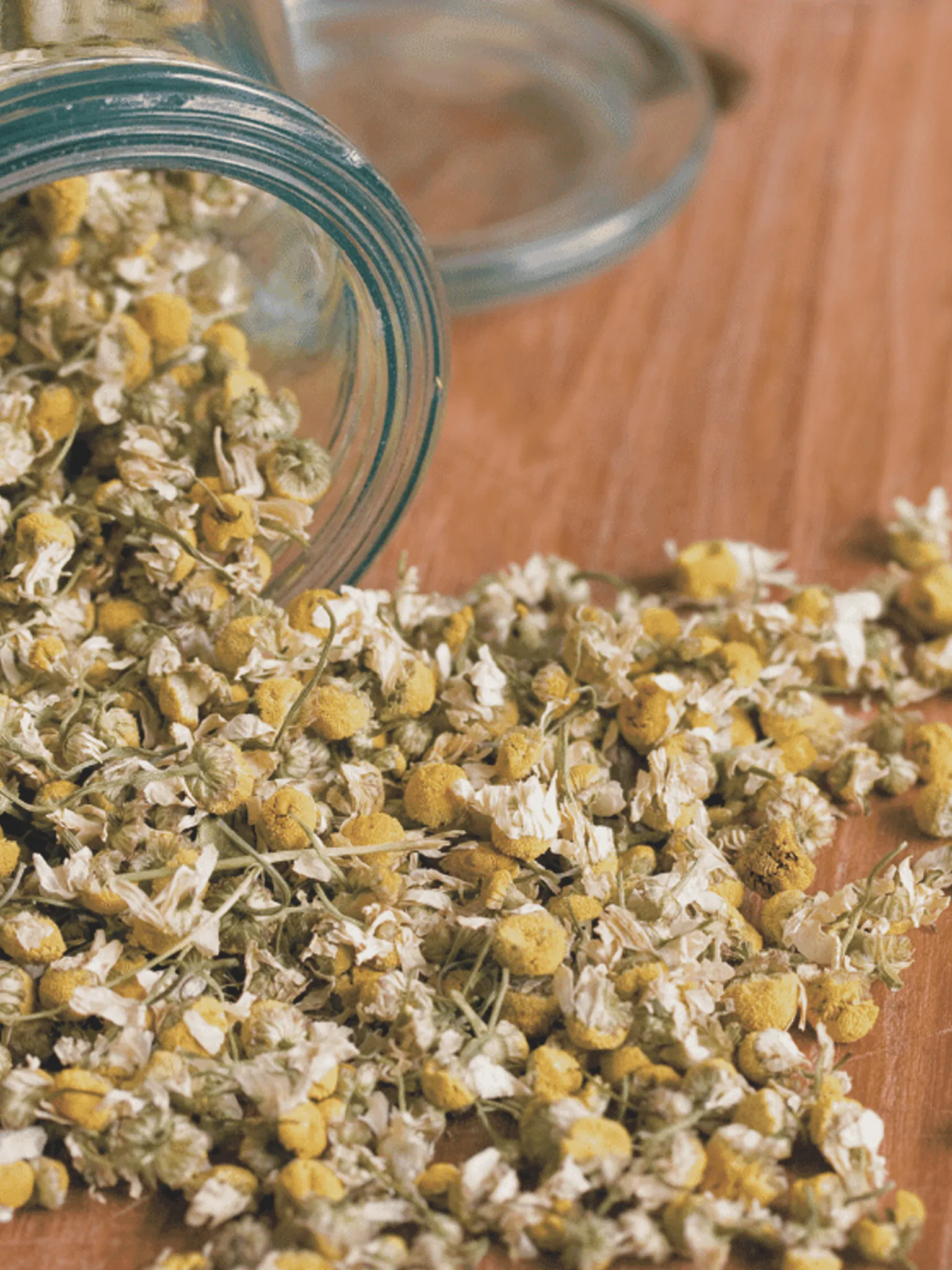
Growing Chamomile
To grow chamomile, sow seeds directly into the garden after the last frost. Chamomile prefers full sun and well-drained soil and requires regular watering. They germinate after about two weeks and reach full bloom after about ten weeks.
Chamomile is a great flower to have in your garden because it attracts loads of beneficial insects. I add it to all my raised beds and plant it near brassicas (except radishes), cucumbers, and onions.
They get to about 2 feet tall and can fall down easily, so I try to plant them near supports like taller plants or fencing. You can add a short stake to gently tie them to, as well.
Harvesting Chamomile
Harvest the flowers in the early afternoon or late morning after all dew has evaporated. Choose flowers that are fully open and deadhead any that are wilting.
To harvest seeds, let the flowers dry out on the plant then collect the tiny seeds. Store them in a cool dry place.
Lemon Balm
Melissa officinalis
Energetics: Cooling and Slightly Drying
Actions: Relaxing Nervine, Gentle Sedative, Carminative, Antiviral, Antidepressant, Relaxing Diaphoretic
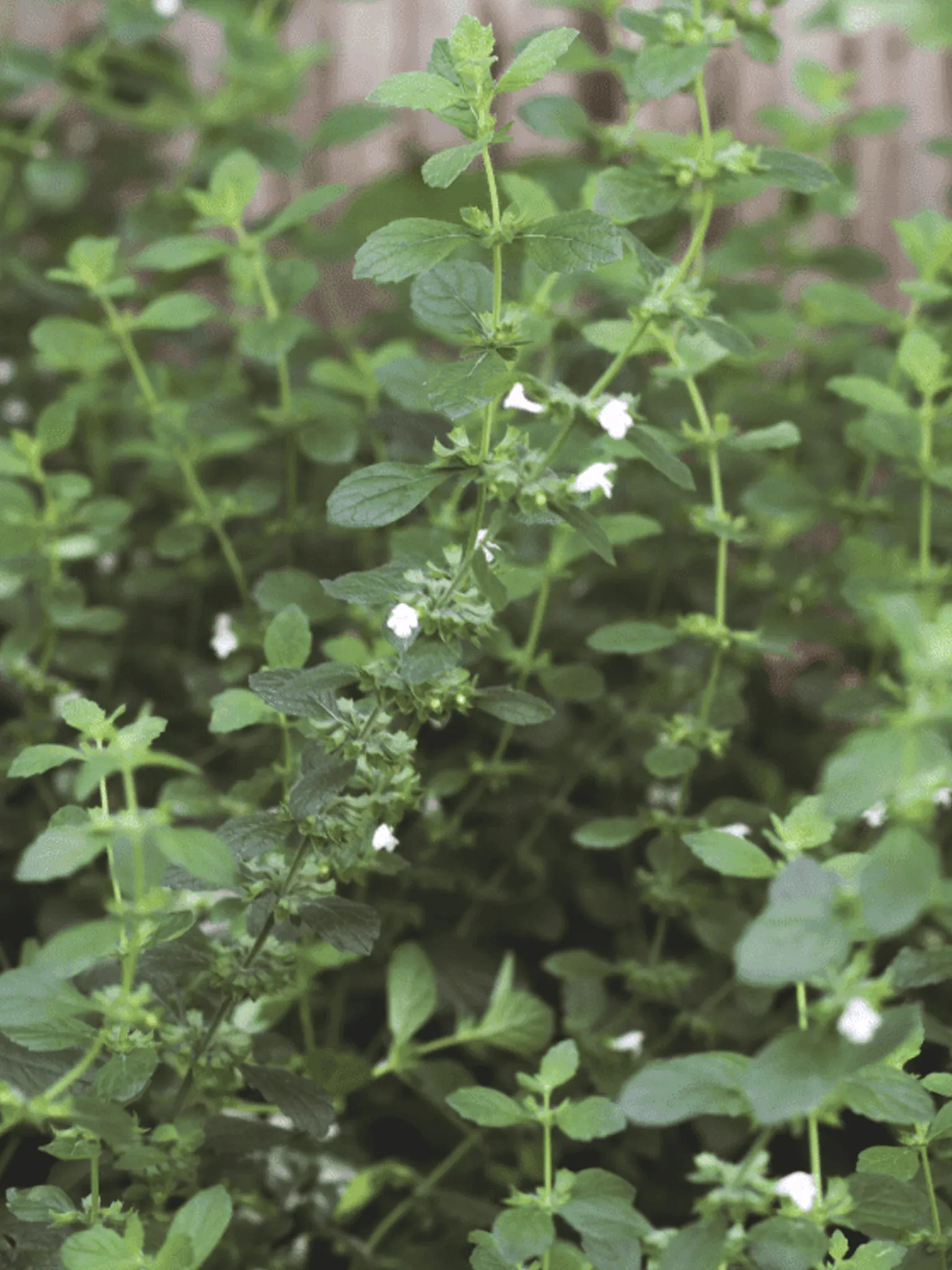
Lemon balm (Melissa officinalis) is a really lovely, citrusy herb to grow in the garden. The flowers attract bees and butterflies and repel mosquitos. I have all the kids in the neighborhood take leaves to crush and rub on their skin during the summer to keep the mosquitos away.
Lemon balm is commonly used to alleviate anxiety and stress and promote restful sleep. It is believed to work by increasing the availability of the neurotransmitter gamma-aminobutyric acid (GABA) in the brain, which has a calming effect.
In addition to its calming properties, lemon balm is also believed to have antiviral and immune-supportive properties. It contains several compounds, including rosmarinic acid and eugenol, which have been shown to have antiviral activity against herpes simplex virus and other viruses. Some studies suggest that lemon balm may also have immune-modulating effects, which could be beneficial for individuals with autoimmune conditions.
Lemon balm is also used to support digestion. It has been shown to have carminative effects, which means it can help relieve gas and bloating. It may also help stimulate the production of digestive juices, which can aid in the breakdown and absorption of nutrients.
I drink a cup of lemon balm and sweet mint tea about 20 minutes before eating to help with digestion.
Growing Lemon Balm
To grow lemon balm, sow seeds directly into the garden after the last frost. Lemon balm prefers partial shade and well-drained soil and requires regular watering.
Lemon balm, like other plants in the mint family, will take over a garden and yard. I recommend planting lemon balm in containers and away from garden beds.
A few years ago, we planted lemon balm in a small area along one of our fences and now it is everywhere, in every garden bed, and even in the lawn. It’s not a terrible problem to have if you love lemon balm, but it can become invasive and choke out other plants.
Be sure to cut down flowers before they go to seed and spread even more!
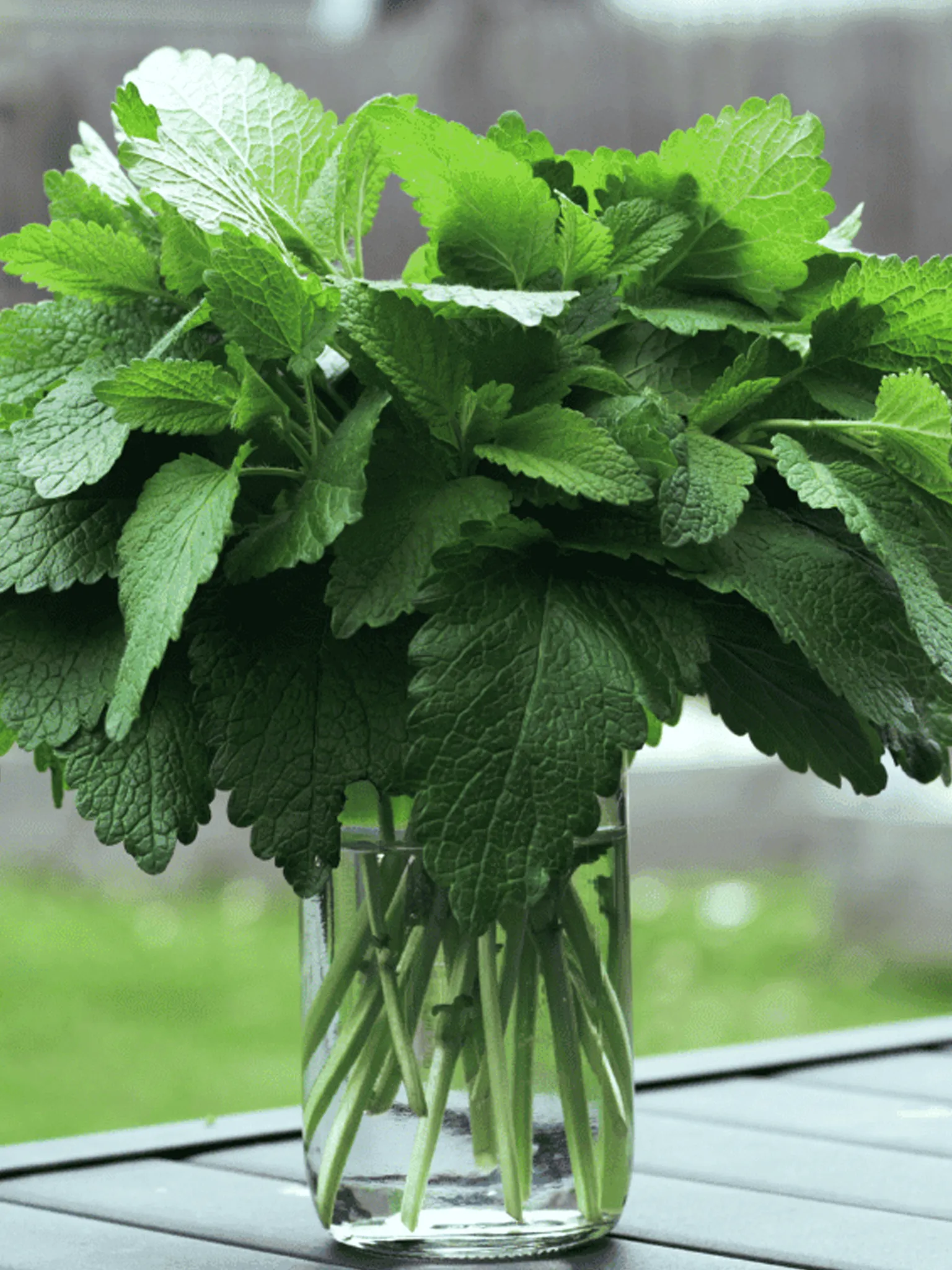
Harvesting Lemon Balm
Harvest the leaves and flowers after the plant is about six inches tall. I prefer to use them fresh because lemon balm’s flavor decreases once dried. Dried lemon balm can last a few months in an airtight container kept out of the sun.
Harvest the flowering tops before they go to seed to help prevent lemon balm from spreading.
If you want to harvest seeds from lemon balm, let the flower stalks dry out on the plant. Carefully collect the seeds and store in a cool dry place. Some seeds will likely drop to the ground, giving you more lemon balm plants next year, so beware!
Make lemon balm tincture from the fresh leaves.
Join Our Newsletter
Sign up for our monthly newsletter to get easy gardening tips, seasonal to-dos, and herbal recipes delivered right to your inbox.
Thank you!
Check your email to confirm your subscription.
I hope these tips help you grow an abundance of herbs to fill your apothecary! Let me know in the comments if you have any questions.
Check out some of my other beginner gardening posts:
References
1. Awad R, Muhammad A, Durst T, Trudeau VL, Arnason JT. Bioassay-guided fractionation of lemon balm (Melissa officinalis L.) using an in vitro measure of GABA transaminase activity. Phytother Res. 2009;23(8):1075-1081. doi:10.1002/ptr.2712
2. Cohen MM. Tulsi – Ocimum sanctum: A herb for all reasons. J Ayurveda Integr Med. 2014;5(4):251-259. doi:10.4103/0975-9476.146554
3. Das SK, Vasudevan D. Tulsi: The Indian holy power plant. Natural Product Radiance. 2006;Vol. 5(4):279-283.
4. Gladstar R. Rosemary Gladstar’s Medicinal Herbs. Storey Publishing; 2012.
5. Grieve MrsM. A Modern Herbal:: The Medicinal, Culinary, Cosmetic and Economic Properties, Cultivation and Folklore of Herbs, Grasses, Fungi, Shrubs & Trees with All Their Modern Scientific Uses. Vol 1. Dover Publications; 1971.
6. Halton TL, Hu FB. The Effects of High Protein Diets on Thermogenesis, Satiety and Weight Loss: A Critical Review. Journal of the American College of Nutrition. 2004;23(5):373-385. doi:10.1080/07315724.2004.10719381
7. Hoffmann D. The Herbal Handbook: A User’s Guide to Medical Herbalism. Healing Arts Press; 1990.
8. Holmes P. The Energetics of Western Herbs. Snow Lotus Press; 1998.
9. Kennedy DO, Little W, Scholey AB. Attenuation of laboratory-induced stress in humans after acute administration of Melissa officinalis (Lemon Balm). Psychosom Med. 2004;66(4):607-613. doi:10.1097/01.psy.0000132877.72833.71
10. McKay DL, Blumberg JB. A Review of the bioactivity and potential health benefits of chamomile tea (Matricaria recutita L.). Phytotherapy Research. 2006;20(7):519-530. doi:10.1002/ptr.1900
11. Sah A, Naseef PP, Kuruniyan MS, Jain GK, Zakir F, Aggarwal G. A Comprehensive Study of Therapeutic Applications of Chamomile. Pharmaceuticals (Basel). 2022;15(10):1284. doi:10.3390/ph15101284
12. Srivastava JK, Shankar E, Gupta S. Chamomile: A herbal medicine of the past with a bright future (Review). Molecular Medicine Reports. 2010;3(6):895-901. doi:10.3892/mmr.2010.377
13. Tierra M. The Way of Herbs: Fully Updated with the Latest Developments in Herbal Science. Pocket Books; 1998.
14. Viola H, Wasowski C, Stein ML de, et al. Apigenin, a Component of Matricaria recutita Flowers, is a Central Benzodiazepine Receptors-Ligand with Anxiolytic Effects. Planta Med. 1995;61(03):213-216. doi:10.1055/s-2006-958058
15. Chamomile: A herbal medicine of the past with bright future – PMC. Accessed May 9, 2023. https://www.ncbi.nlm.nih.gov/pmc/articles/PMC2995283/










